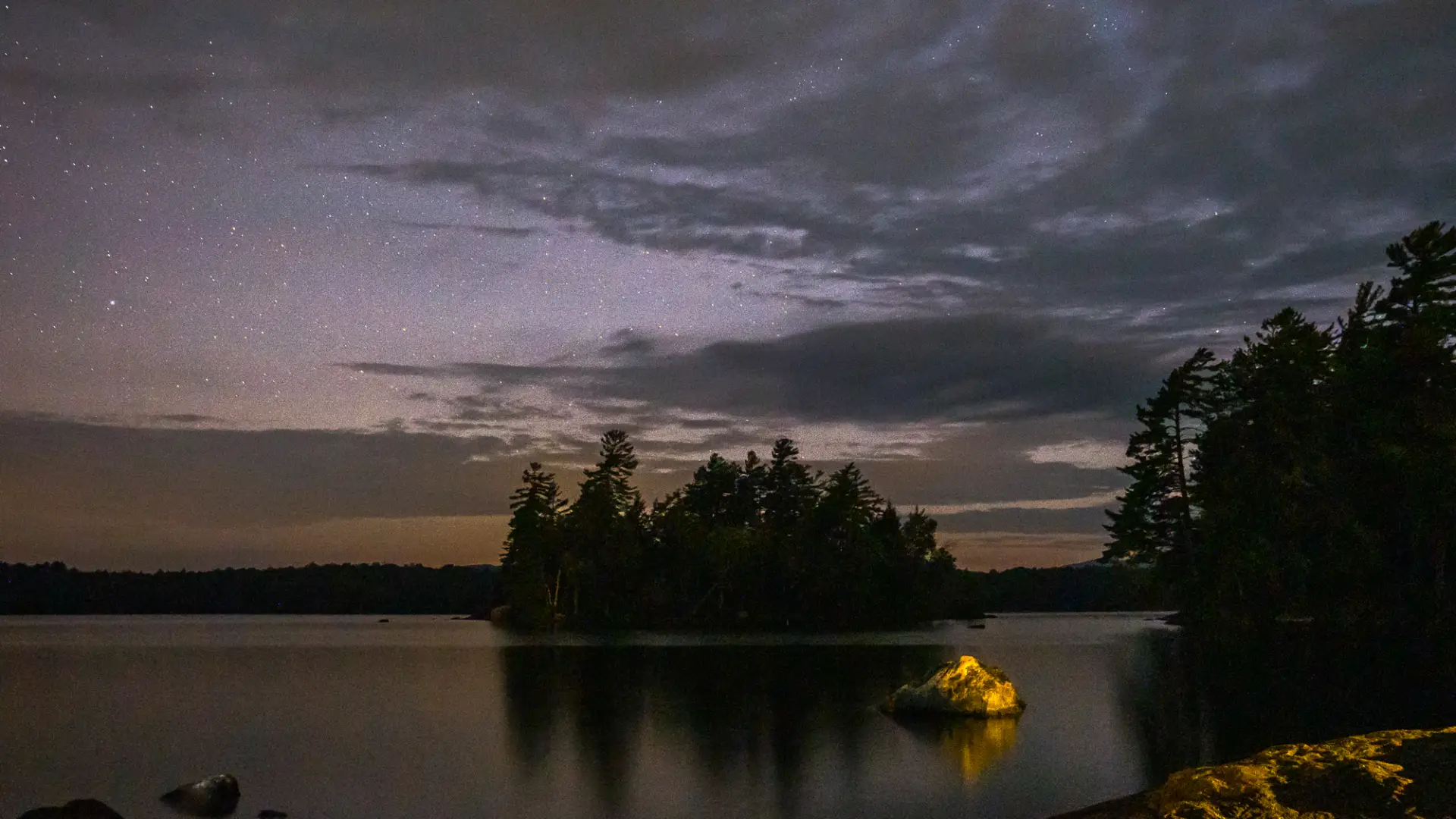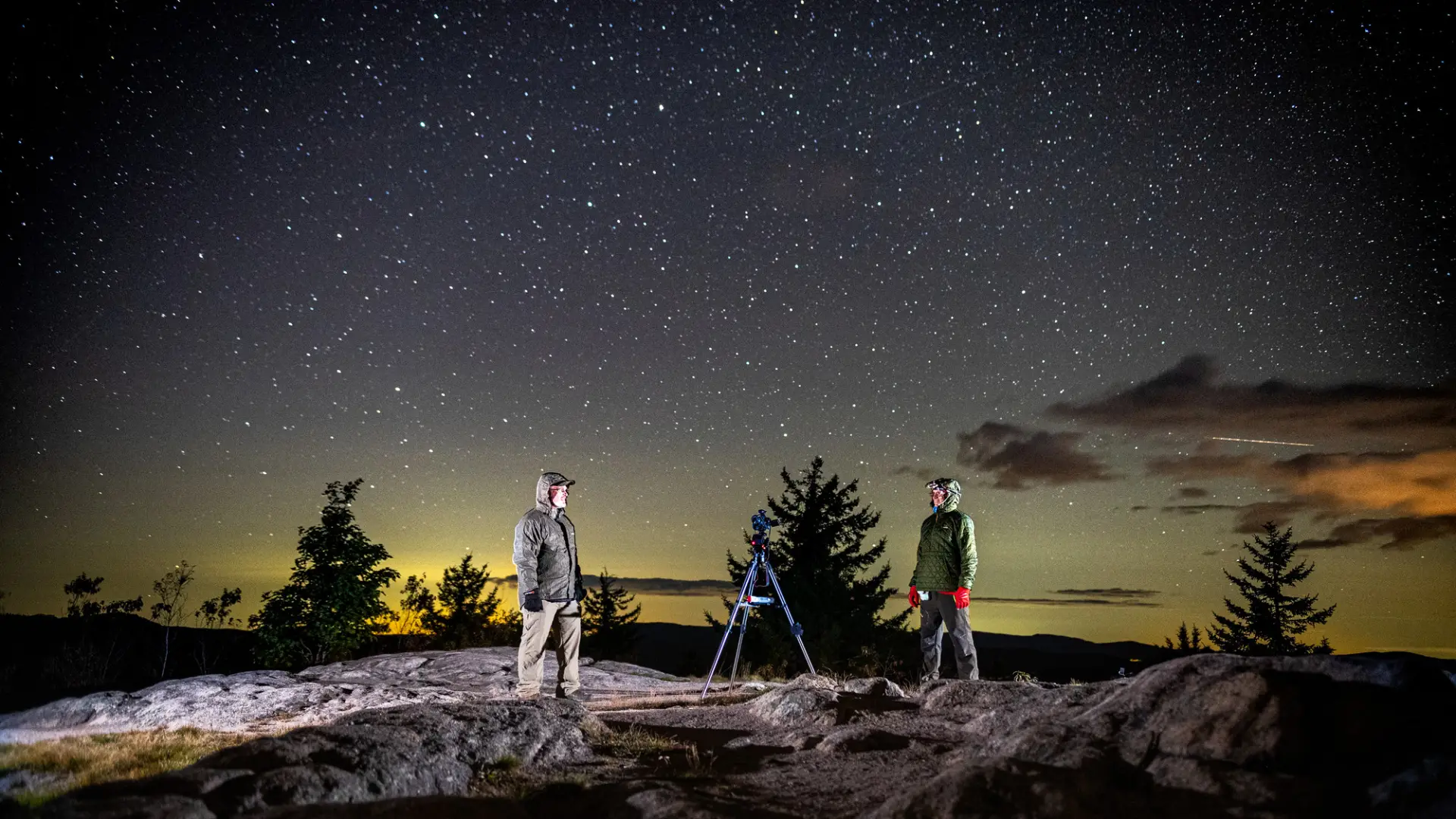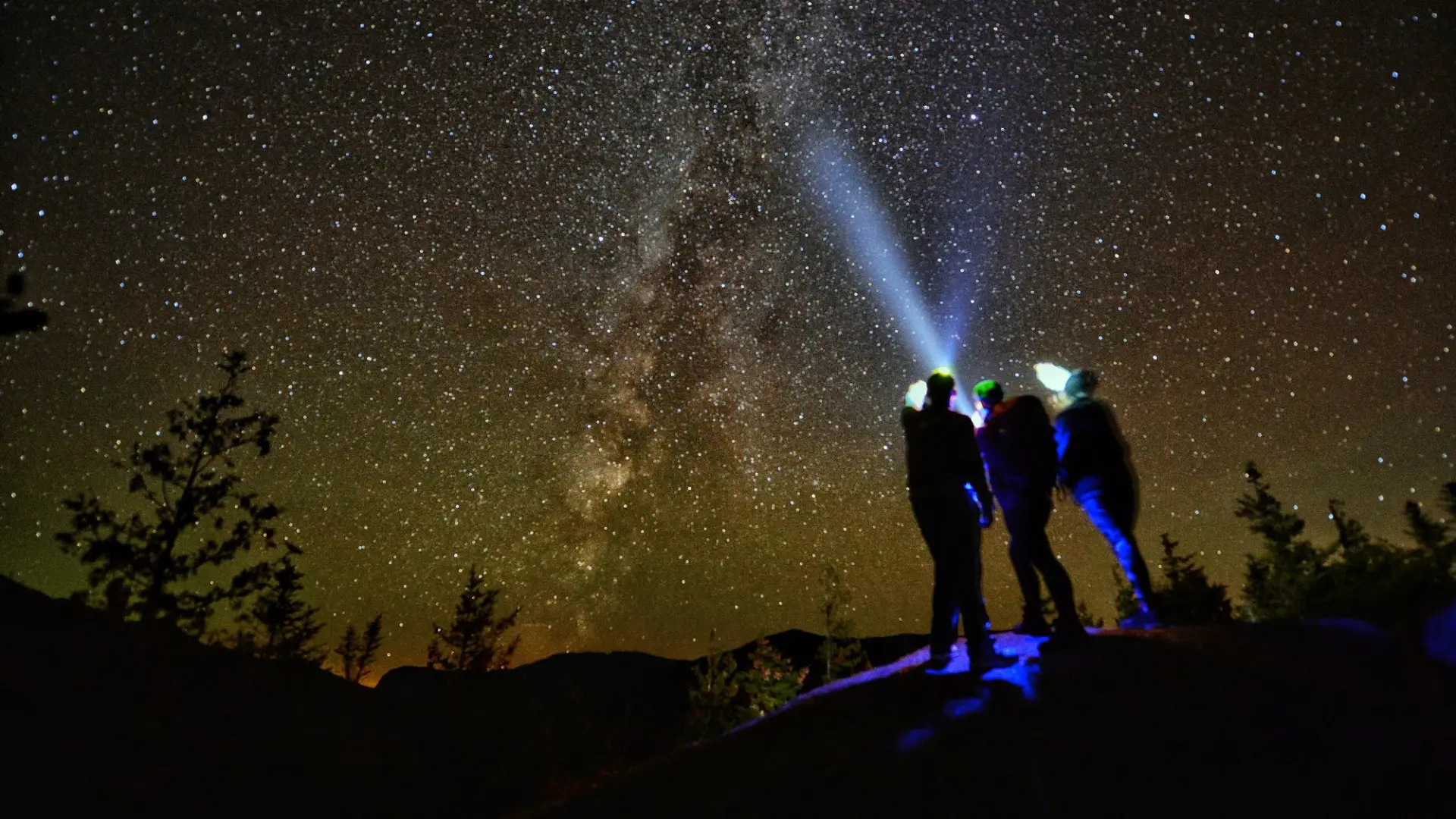Lake Placid’s Astrotourism Rises Beneath the Adirondack Stars

Discover Lake Placid’s dark skies: A new frontier for stargazers
When you look at a light pollution map of the United States, one of the rare dark spots you’ll notice is the Adirondack Park: a vast, protected wilderness that blankets the Lake Placid region in stunning natural darkness. The relative absence of artificial light here creates ideal conditions for stargazing, making Lake Placid an emerging destination for astrotourism.
But the magic of these night skies isn’t just a natural biproduct of the forest preserve. Thanks to the dedicated efforts of the Lake Placid Dark Skies Committee and local partners, light pollution in the region is actively being reduced, preserving and enhancing the clarity of the cosmos overhead so visitors can experience spectacular celestial shows like never before. So mark your calendar for the following meteor showers and discover the best stargazing spots around Lake Placid. The night sky here is waiting to amaze you!

What makes Lake Placid perfect for stargazing?
The 6-million-acre Adirondack Park is comprised of large swaths of protected forest with minimal infrastructure to give off artificial light. This naturally leads to low levels of light pollution and therefore darker skies. Among this wilderness you will find mountain summits, wide open fields, and expansive waterbodies that offer excellent perspectives on the night sky with little to no light around to interfere with your view. However, the Adirondacks isn't all lakes and trees—there are vibrant communities here, too!
In Lake Placid and surrounding communities, the Lake Placid Dark Skies Committee is working to educate residents and businesses on simple ways they can reduce light pollution. In addition to raising awareness, they’ve crafted draft municipal codes aimed at guiding future construction projects to minimize unnecessary or poorly directed outdoor lighting. They have also partnered with local organizations such as the Olympic Regional Development Authority (ORDA) to identify opportunities for reducing light pollution during construction projects and venue improvements.

Lighting innovations at Olympic legacy venues
Preserving Lake Placid’s dark skies while hosting world-class events takes innovation. The Lake Placid Dark Skies Committee and ORDA have partnered to reduce light pollution at Olympic venues without sacrificing performance or quality. At the Ski Jumps, recent upgrades introduced a precision LED lighting system that directs bright, sports-specific illumination downward, concentrating light solely on the competition area. Following this success, similar lighting solutions are planned for the Olympic Speed Skating Oval, where evening skating sessions and events like IRONMAN demand excellent, controlled lighting.
Meanwhile, ongoing construction at the Olympic Sliding Complex and Mt Van Hoevenberg includes the installation of state-of-the-art dimmable and tunable white-light fixtures. These allow brightness and focus adjustments for training, competitions, and maintenance, with zones that can be darkened when not in use. These thoughtful lighting innovations strike a balance between preserving the natural beauty of Lake Placid’s night sky and supporting the region’s vibrant sports culture.
To learn more about ORDA’s lighting strategies, visit their Dark Sky initiatives page.

Celestial events to watch in 2025
Throughout 2025, several celestial events will light up Lake Placid's night sky, offering unforgettable experiences for both seasoned observers and curious newcomers.
The Eta Aquarids kicked off this year’s major meteor activity in early May. Created by debris from Halley’s Comet, this shower offered up to 50 meteors per hour during its peak.
In August, the Perseids, one of the most popular and brightest meteor showers, takes center stage. Peaking on August 12–13, the Perseids can produce 60 to 100 meteors per hour. The radiant rises in the northern sky around 8 p.m. and drifts northeast as the night progresses, making it ideal for an evening of skywatching.
In the fall, the Orionids return on October 20–21. Also linked to Halley’s Comet, this shower typically peaks at about 20 meteors per hour. Viewers can spot the meteors beginning just after midnight, with activity rising in the eastern sky and shifting southward by early morning. The radiant reaches about 60 degrees above the southern horizon around 5 a.m.
Finally, the year ends with a bang with the Geminids on December 13–14. Often regarded as the most spectacular meteor shower of the year, the Geminids can produce up to 150 meteors per hour. The radiant emerges in the northeast around 6 p.m., climbs to the east by 10 p.m., peaks in the southern sky around 2 a.m., and finally drifts west by dawn.
Each of these events offers a unique opportunity to connect with the cosmos, especially under the dark, quiet skies of Lake Placid. Bring a blanket, dress for the weather, and let the Adirondack night do the rest.

Stargazing tips and best spots near Lake Placid
Lake Placid offers countless places to settle in for a night of stargazing. Some of the best spots double as hiking destinations, giving you the chance to soak in both scenic views by day and celestial wonders by night.
For wide-open skies with easy access just minutes from downtown, Henry’s Woods and Heaven Hill Trails offer quiet forested loops that open up in clearings ideal for skywatching. Hikers will appreciate Mt. Jo, which offers panoramic views of the High Peaks and an unforgettable night sky if you're comfortable making the descent with headlamps. Even a peaceful evening walk around Mirror Lake can reward you with reflected starlight and serenity.
To make the most of your outing, bring a red-light flashlight, a blanket or reclining chair, layers for warmth, and maybe a thermos of tea or cocoa. Give your eyes 20–30 minutes to fully adjust to the dark for the best viewing. While stargazing apps can help you locate constellations and track meteor showers, remember that your eyes will have to readjust each time you check your phone.

Get ready for dark skies in Lake Placid
With naturally dark skies and dedicated local efforts to reduce light pollution, this region is quickly becoming a beacon for astrotourism in the Northeast. Plan a hike that ends beneath a sky full of stars or time your visit to catch a meteor shower.
Whether you're stargazing after a hike, finding a spot to camp, or simply stepping outside after dinner, the Adirondack night sky offers one of the most awe-inspiring shows around—no tickets required. Bring your curiosity, your warm layers, and a sense of wonder, because when the sun sets in Lake Placid, that’s when the real show begins.
For tips on reducing light pollution at home, visit DarkSky International. To get involved with Lake Placid Dark Sky efforts, contact John Winkler, Chair of the Lake Placid Dark Skies Committee, at jkwinkler3@gmail.com.